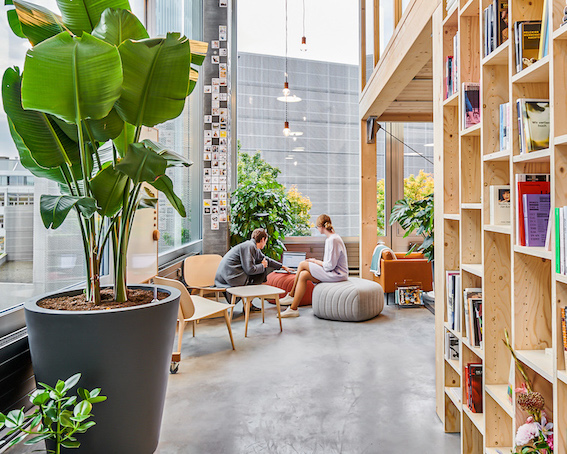
7 macro trends shaping the future of work
September 15, 2021
April 10, 2024
This decade is seeing unprecedented shifts in the way we work. In 2020 many of us switched to a home office set-up overnight, but this years’ changes are not any less significant. Companies are beginning to realize that a remote set-up works better than expected. At the same time, people have gotten used to working from home or places other than the office and have learned to appreciate the benefits, such as less commuting, increased concentration during solo work and greater accessibility to work.
It is imminent that we won’t go back to pre-pandemic work, as if Covid never happened. At the same time, we won’t continue to work from home forever. Whilst companies are preparing for the future, Microsoft has gathered the 7 most important macro trends that are going to shape our future of work in the years to come and we have summarized them for you:
1. Hybrid is here to stay
There are benefits to working from home, but also to being in the office on a regular basis. So why not combine both? Over 70 percent of employees want flexible work options to continue, thus companies are well-advised to start thinking about what their hybrid work concept is going to look like. More specifically,
- 66% of leaders state that their company thinks about redesigning office spaces for hybrid work.
- 73% of employees want flexibility in their work location.
- 67% of employees also wish for more in-person collaboration after the pandemic.
(Work Trend Index survey: Edelman Data x Intelligence, conducted in January 2021 amongst 31’000 employees in 31 markets)

Start your hybrid working model with our desk booking solution.
2. New leadership
Naturally, a new work set-up will require leaders to overthink current practices. From topics like inclusion, employee engagement to well-being, hybrid work concepts will challenge leaders. What was working well before the pandemic won’t be doable any more with an increasing percentage of the workforce not being physically present on a daily basis. And what was working at home times was often set up temporarily. Now, new ways of addressing both the remote and physically-present workforce must be found without discriminating against one or the other.
3. Gen Z
Microsoft’s survey has revealed shocking results: 60% of Gen Z, meaning the population between 18 and 25 years old, have said to be merely surviving or struggling. It is time to have a closer look at the needs of Gen Z and to pay more attention to them. Ensuring their wellbeing and considering their contributions will be a crucial factor for the success of hybrid work models.

4. Talent is everywhere
During the pandemic, remote job postings on LinkedIn and other platforms went up by more than five times. Especially women, Gen Z and applicants without a graduate degree are more likely to apply to remote positions, as a LinkedIn analysis suggests. This development offers companies access to a bigger talent pool and can be a huge source of competitive advantage and opportunity.
5. Digital balance
With an increasing amount of digital communication, it has also become more difficult to cope with the speed and urgency of virtual work. On average, the workforce attends more meetings, sends more messages and emails and works on more documents than one year ago. But it is harder for our brains to process digital information because we are missing non-verbal cues like tone of voice, body language or seeing the speaker’s facial expressions while they talk. This leads to digital static, or “the gap between what you try to communicate and what the receiver understands”. The growth of digital static leads to decreased motivation and engagement, but also to higher fatigue levels, anxiety and risk or burnout. However, there is some light at the end of the tunnel. Countries which have already implemented hybrid work models saw these numbers increasing less than their fully remote counterparts, which leads us to believe that hybrid workplace concepts can boost digital balance.
6. Shrinking networks
Not only have our personal networks decreased during the pandemic, but so have our professional ones. Microsoft’s analysis of tool use has shown an increase in communication with our close teams in parallel to a decrease in communication with a broader network. In short, we have become siloed and this especially threatens workplace relationships and innovation. Hybrid concepts that foster exchange between coworkers again thus help to bring these levels back to where they should be.

7. Office redesign
With hybrid workplace models on the rise, companies also have to reconsider the use of their offices. The IWG group has gathered some crucial tips what office managers should focus on when redesigning their buildings:
- Focus on quality: What used to be a sea of indistinguishable desks ought to become a place where employees love to spend their time.
- Provide elasticity: Whilst some employees will need space for team meetings and innovation, others seek calm and comfort. Make sure there is a place for everyone.
- Embrace technology: With an increasing and steady amount of employees working remotely, adopt the latest technology to ensure they feel included and have no difficulties joining your physical workforce from remote locations.
We are excited to see what else the future of work holds for us. If you have any questions, comments or input regarding the new workplace, please feel free to contact us at any time. We look forward to exchanging our ideas with you!





